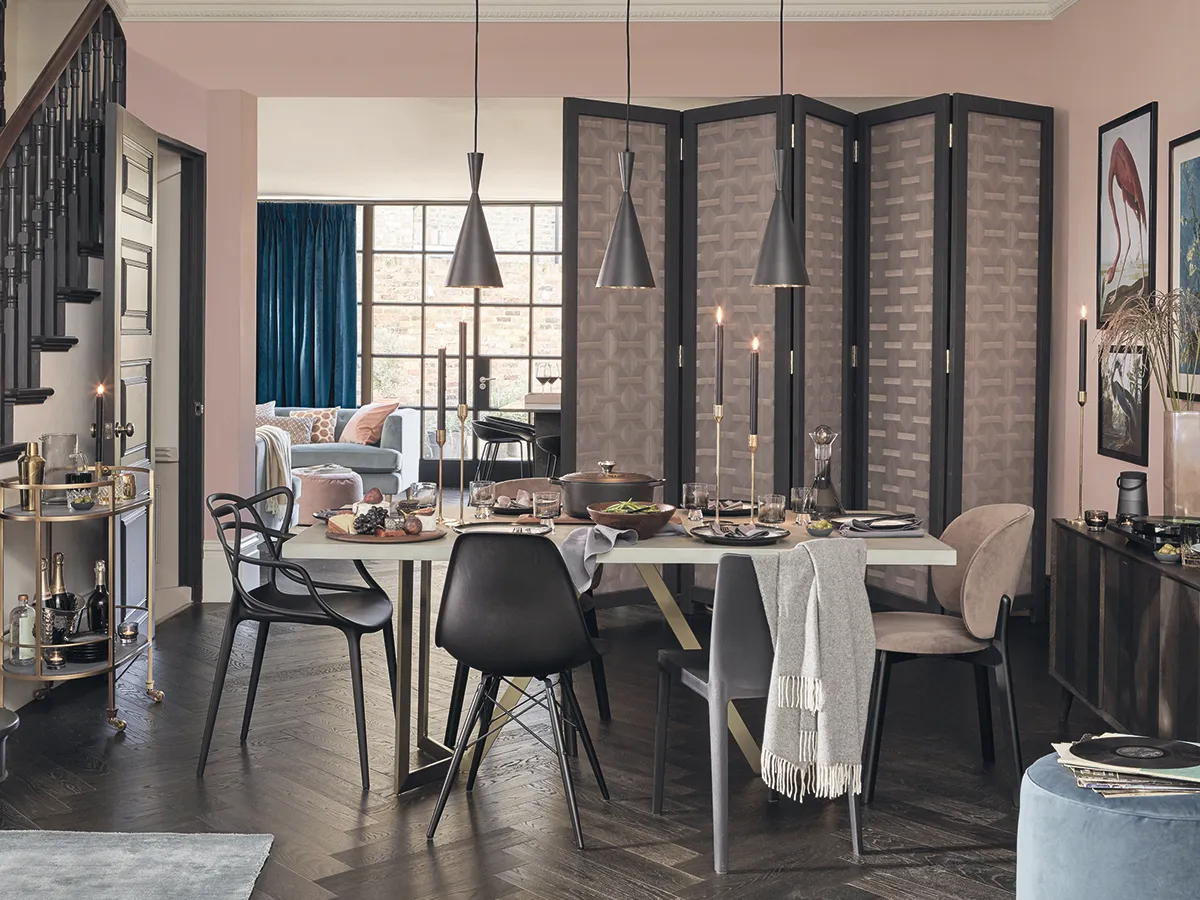When you’re short on space but you don’t want to sell up and move house, turning your downstairs layout into an open-plan scheme could be the perfect solution. The idea is that you knock down some or all of the internal walls and doors to create one large open area that can be used for cooking, dining, entertaining, relaxing and even working from home.
For some, having an open kitchen-diner and separate, closed-off living room works better, while for others it’s a case of embracing the trend full-on and eliminating all the barriers throughout. Here’s what to consider before you take the plunge
Is open plan a good idea? What are the pros and cons of open plan?
The main reason homeowners go open-plan is to bring the family together. You can make dinner while the kids sit at the island doing their homework and guests can relax in the same room as the cook rather than being in separate spaces. The whole area will also feel brighter and it can add value to the property. Ask local estate agents what cost they think this would add and don’t spend more than the return you’d get on your investment.
The downside is that noise will carry through the space, so you may find that having appliances whirring away in the background isn’t compatible with watching TV. Also, think about cooking smells – an efficient extractor hood is key. It can be harder to keep tidy too, as you can’t simply close the door on any after-dinner mess.
If you work from home you might want to consider noise and distractions from other members of the household if everyone is at home and sharing the same space. You could consider concealing a desk area behind cupboard doors, creating a cloffice or even converting a garden shed into a home office
Do you need planning permission to make your house open plan?
If you’re not extending, you’ll most likely be knocking down internal walls and doors to create your open-plan space. If you’re in a listed building you’ll need listed building consent before you start any work, so be sure to keep that in mind. If walls are non-structural then it’s cheaper and easier than if they are load-bearing, which means they will need a reinforced steel joist or RSJ to support the floor above.
Find a structural engineer to help with advice, costs and drawings. You can also add space with an extension. A side return is a popular option for Victorian properties, while full-width extensions and wraparounds combine a side return with a rear extension to create a huge area with lots of natural light.
How do you heat open-plan rooms?
Keeping an open-plan space warm and cosy can be a challenge, so plan your heating carefully. Underfloor heating is the best option if budget allows, and it works especially well with tiles and stone. Check your flooring choice is compatible before you begin. Other options include vertical radiators, plinth radiators and even a wood-burning stove or cassette fire.
How do you reduce noise in an open-plan kitchen
When it comes to noise, if the space includes a kitchen area, choose appliances with lower decibel ratings. Look for the Quiet Mark, which indicates when a product is especially whisper-quiet. Integrated washing machines and dishwashers can offer extra noise protection as they have a matching kitchen cabinet door as an additional buffer.
How do I create a zones in open-plan living?
While it’s nice to have all that space, it’s also perhaps more practical and more aesthetically pleasing to create distinct zones for the different activities that will take place. So in the kitchen, consider an island or peninsular that will act as a room divider, keeping appliances safely away from the rest of the living zone.
You can also paint walls in different shades of the same colour or totally different colours; use wall tiles as the kitchen splashback and patterned floor tiles to mark out the cooking area or to create a border effect around contrasting flooring.
‘Your décor will form an important element of the design, as colour and materials are a great way to accent specific areas,' says Philippa Prinsloo, Head of Home Design at John Lewis & Partners.' If you want to bring the space together, opt for a neutral scheme that can be accessorised with bold colour. Although it’s important to create harmony, using different tones and textures will help to delineate the space. Don’t be afraid to go for contrasting shades and prints.’
Different lighting effects are also a good tip. Hang pendant lights over a dining table or island and use wall lights and table lamps in the living area. Rugs are also a great way to create separate zones and a different feel for each space.
What is 'broken-plan' design and how does it work?

A new take on the open-plan look is the ‘broken-plan’ design, where you still have the open space but you use items like furniture and room dividers to create separate zones within a space. This has the advantage of giving you privacy when needed and helps to define the different zones more distinctly.
Think sliding and bi-fold screens, room dividers, bookcases and even large pieces of furniture such as sofas and sideboards. You can also achieve the look with flooring, split-levels and modular pieces that can quickly and easily be moved into different positions. Rather than using decoration alone to create the various zones, this is all about adding structural elements such as half walls, free-standing furniture, changes in levels and even glass walls so you get the best of both worlds.
Should I keep original period features?
If you live in an older property, you may not have the boxy blank canvas that a modern new-build provides, but this is an advantage in many ways. Your home probably includes many original features and architectural elements that you don’t want to lose when going open-plan, so try to avoid removing or replacing them wherever possible.
Try to find an architect who has experience in designing for period properties, as they will be able to help you maintain the building’s character and plan any renovations around it. Things like chimneys, fireplaces, pillars, plaster mouldings, internal joinery and original windows can all become a feature within the new scheme.
You can check out lots of makeovers and revamps and get inspired in our Real Homes section


